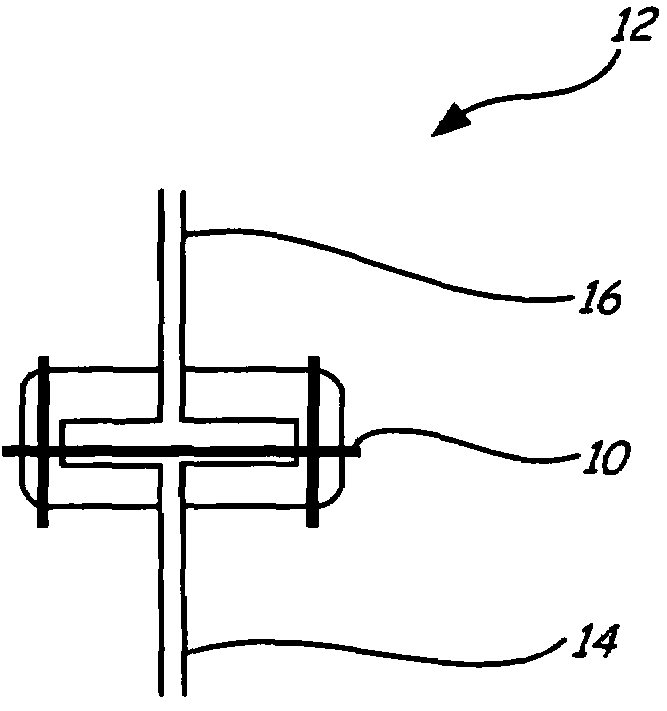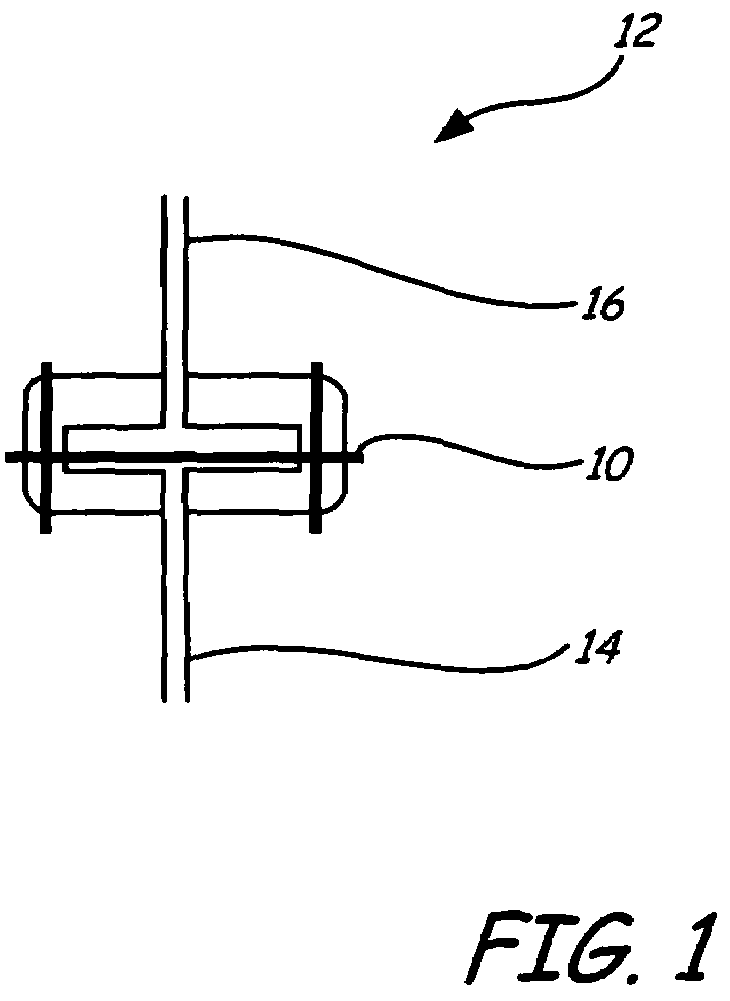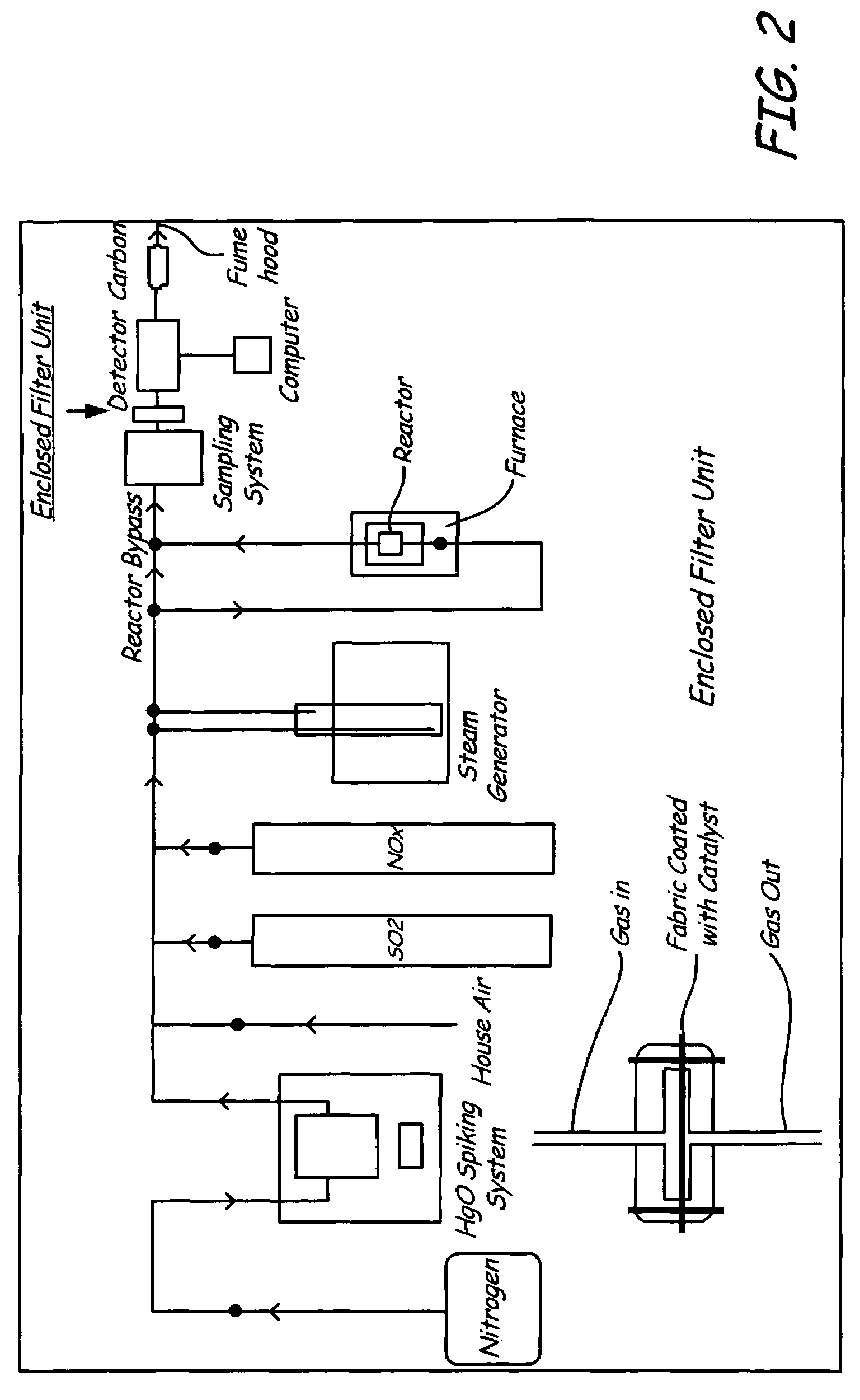Mercury oxidation of flue gas using catalytic barrier filters
a technology of catalytic barrier filter and flue gas, which is applied in the direction of mercury compound, dispersed particle separation, separation process, etc., can solve the problems of no single best technology that can be applied broadly yet still efficiently remove mercury from the flue gas stream, and the cost of mercury control technologies is high, so as to facilitate the simultaneous removal
- Summary
- Abstract
- Description
- Claims
- Application Information
AI Technical Summary
Benefits of technology
Problems solved by technology
Method used
Image
Examples
example 1
Construction and Use of a Catalytic Barrier Filter
[0034]A fabric filter was coated with a catalyst, palladium, and was placed in the flow path of a coal combustion flue gas stream containing mercury. Many modern coal combustion plants use a baghouse containing multiple filter bags in order to remove fly ash particles from the flue gas prior to emission to the atmosphere. Many of these same coal combustion plants use a flue gas desulfurization system (FGD), such as a wet lime / limestone slurry, to remove SO2 from the flue gas, after the baghouse prior to emission.
[0035]The fabric filter material chosen was described as follows: BHA PT001 / P84 with Scrimm supported needle felt. Finish: heat stabilized, calendered, singed. Weight=441-526 g / m2. Air Permeability: 25-45 ft3 / min / ft2 (cfm) @ 0.5″H2O (ASTM D737). Min. Mullen Burst Strength=25 kg / cm2. Min. Tensile Strength: warp direction=27 kg / cm; fill direction=40 kg / cm. Max. Temp.=260° C. Thermal Stability: 1.5% max @ 135° C. The catalyst ch...
example 2
Construction and Use of Catalytic Barrier Filters for Small Baghouses for the Combustion of Gas or Oil
[0039]A fabric filter spray-coated with gold (catalyst) was placed in the flow path of flue gas stream containing mercury and atmospheric oxygen, with relatively low particulate loading. Examples of this flow path include the gas stream produced from the combustion of gas or oil. For these applications, the particulate loading is low, and particulate removal may or may not be necessary to meet regulatory standards. For these applications, the impregnated catalyst enclosed filter was employed with a high air-to-cloth ratio without concerns of high pressure drop. This approach used a smaller baghouse with a lower number of bags relative to Example I.
[0040]Testing was performed using a simulated flue gas, where the simulated gas was free from particulate matter. The simulated flue gas contained N2, O2, CO2, NO, SO2 and H2O. Varying quantities of Hg, Cl2, and HCl were added to evaluate ...
example 3
Construction and Use of Catalytic Barrier Filters for Small Baghouses for the Combustion of Coal, Biomass, or Waste Fuels
[0041]This example includes the gas stream produced from the combustion of solid materials such as coal, biomass, or waste fuels, where these flue gases first passed through a primary filtration device, such as an electrostatic precipitator. In these particular cases, the particulate loading was low, similar to the levels seen in Example 2. Similar to Example 2, mercury oxidation was accomplished using the invention described at very high air-to-cloth ratios. The experiments performed with both the Pd (Example I) and the gold catalyst (Example II) provided data demonstrating the viability of the invention.
PUM
| Property | Measurement | Unit |
|---|---|---|
| velocity | aaaaa | aaaaa |
| lifetime | aaaaa | aaaaa |
| water soluble | aaaaa | aaaaa |
Abstract
Description
Claims
Application Information
 Login to View More
Login to View More - R&D
- Intellectual Property
- Life Sciences
- Materials
- Tech Scout
- Unparalleled Data Quality
- Higher Quality Content
- 60% Fewer Hallucinations
Browse by: Latest US Patents, China's latest patents, Technical Efficacy Thesaurus, Application Domain, Technology Topic, Popular Technical Reports.
© 2025 PatSnap. All rights reserved.Legal|Privacy policy|Modern Slavery Act Transparency Statement|Sitemap|About US| Contact US: help@patsnap.com



